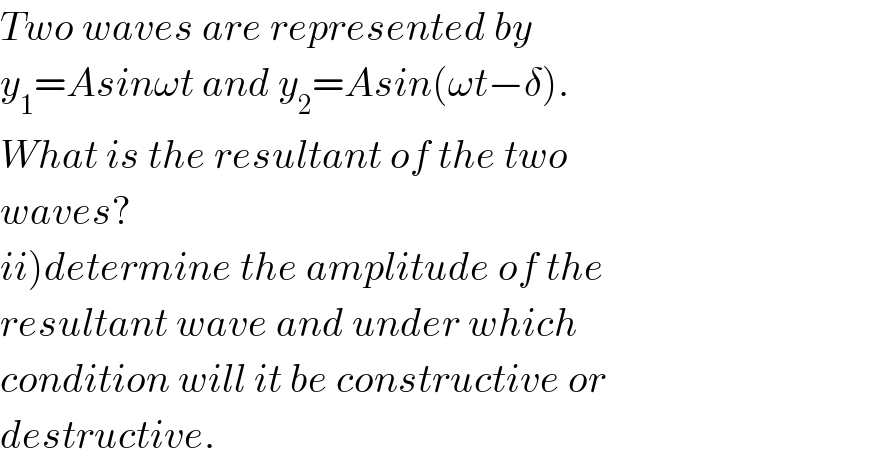
Question and Answers Forum
Previous in Oscillation and Waves Next in Oscillation and Waves
Question Number 38816 by NECx last updated on 30/Jun/18

Answered by tanmay.chaudhury50@gmail.com last updated on 30/Jun/18

Commented by NECx last updated on 30/Jun/18

